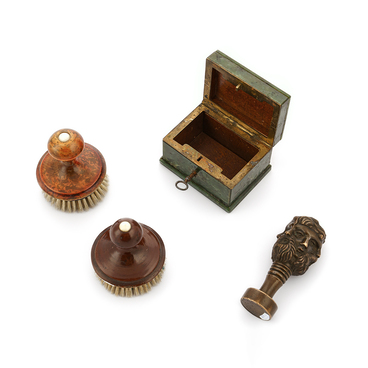The collection of the Lipetsk Regional Museum of Local Lore includes one of the most venerated icons in Russia — Our Lady of Kazan.
The Kazan icon of the Virgin Mary belongs to the Hodegetria type. The name is translated from Greek as “the Guide”. It has a profound meaning, as the Virgin Mary acts as a guide to Christ for all believers. In traditional Hodegetria icons, Mary holds the Christ Child with one hand and points to Him with the other. However, in the Kazan version of this type, She is depicted only up to the shoulders, so Her hands are not visible. Both the Virgin Mary and the Christ Child look directly at the viewer. With His right hand, Jesus makes a blessing gesture, while His left hand is hidden by His clothes.
The icon of the Virgin Mary appeared in Kazan after a terrible fire in 1579. According to the Legend of Our Lady of Kazan written by Patriarch Hermogenes in 1594, the Virgin Mary appeared to a nine-year-old girl named Matrona and asked her to find an icon among the ruins. Others did not believe the girl, but the Virgin Mary continued to appear to her again and again. Matrona kept asking the adults to help her find the icon. Eventually, they agreed and found an icon wrapped in fabric at the location indicated to the girl by the Virgin Mary. On the site where the icon was found, the Monastery and the Church of the Virgin Mary were built by order of the Tsar. The first copy of the icon was sent to Moscow.
In 1904, the original Kazan icon was stolen from the monastery and likely destroyed. However, copies made from the original icon have survived. The icon from the museum collection is distinguished by the images of the Saints Florus and Laurus in the border scenes. Apparently, they were added at the request of the person who commissioned the icon and revered these martyrs greatly. In Russia, the holy martyrs have been venerated since ancient times. In the 13th century, there was a legend in Novgorod that after the discovery of their relics, the cattle plague stopped, and animals were healed through prayer to these saints.
When the icon of Our Lady of Kazan entered the Lipetsk Museum, it looked different. The layer of lacquer had darkened over time, and in the 19th century, another iconographer painted a new image of the Virgin Mary on top of it using oil paints. In the 1990s, the icon was sent to Moscow for restoration. Restorers uncovered an earlier image beneath the layer of paint, dated it to the 17th–18th centuries, and removed the upper layer, revealing the original image.


